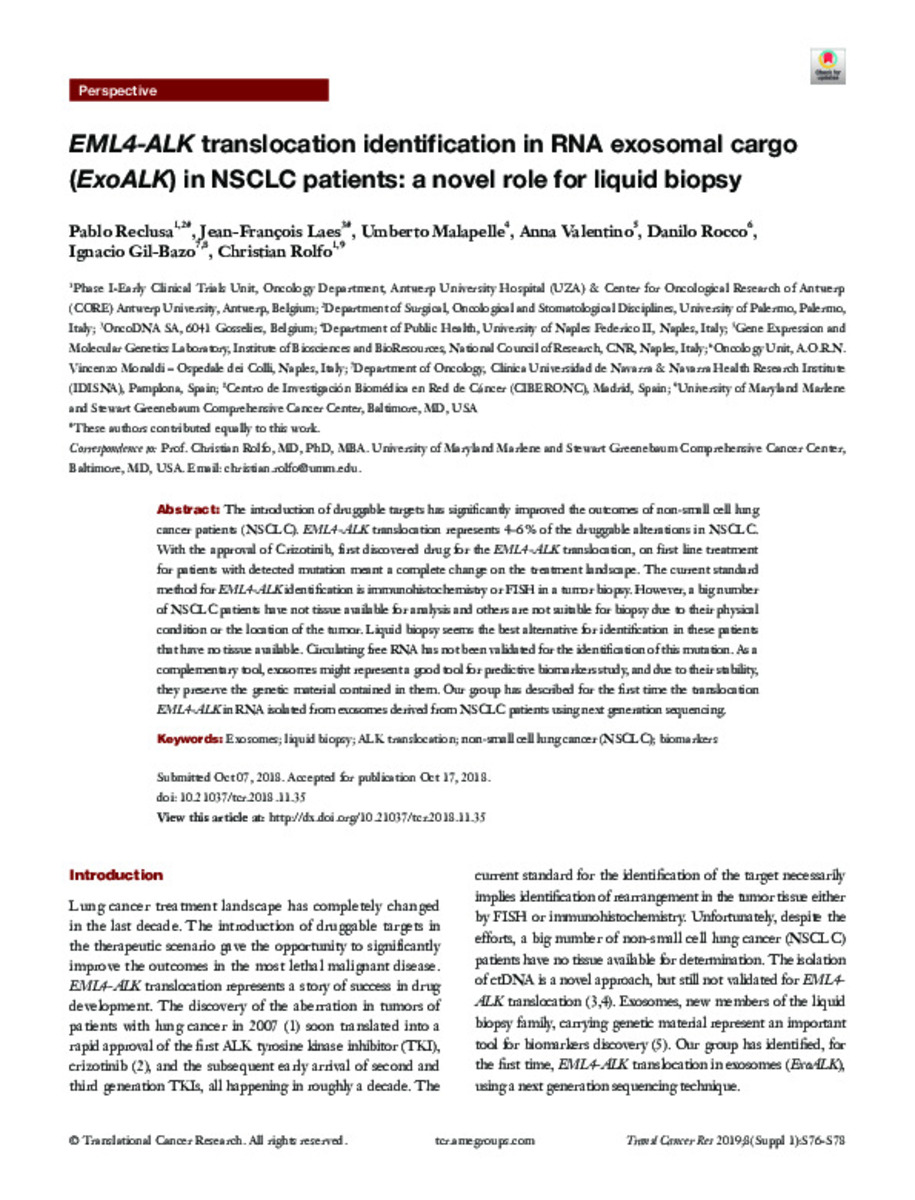EML4-ALK translocation identification in RNA exosomal cargo (ExoALK) in NSCLC patients: a novel role for liquid biopsy
Palabras clave :
Materias Investigacion::Ciencias de la Salud::Oncología
Exosomes
Liquid biopsy
ALK translocation
Non-small cell lung cancer (NSCLC)
Biomarkers
Fecha de publicación :
2019
Editorial :
AME Publishing Company
Nota:
This is an Open Access article distributed in accordance with the Creative Commons Attribution-NonCommercial-NoDerivs 4.0 International License (CC BY-NC-ND 4.0), which permits the noncommercial replication and distribution of the article with the strict proviso that no changes or edits are made and the original work is properly cited (including links to both the formal publication through the relevant DOI and the license). See: https://creativecommons.org/licenses/by-nc-nd/4.0/.
Cita:
Reclusa, P. (Pablo); Laes, J.F. (Jean-François); Malapelle, U. (Umberto); et al. "EML4-ALK translocation identification in RNA exosomal cargo (ExoALK) in NSCLC patients: a novel role for liquid biopsy". Translational Cancer Research. 8 (1), 2019, S76 - S78
Aparece en las colecciones:
Estadísticas e impacto
0 citas en

0 citas en

Los ítems de Dadun están protegidos por copyright, con todos los derechos reservados, a menos que se indique lo contrario.







